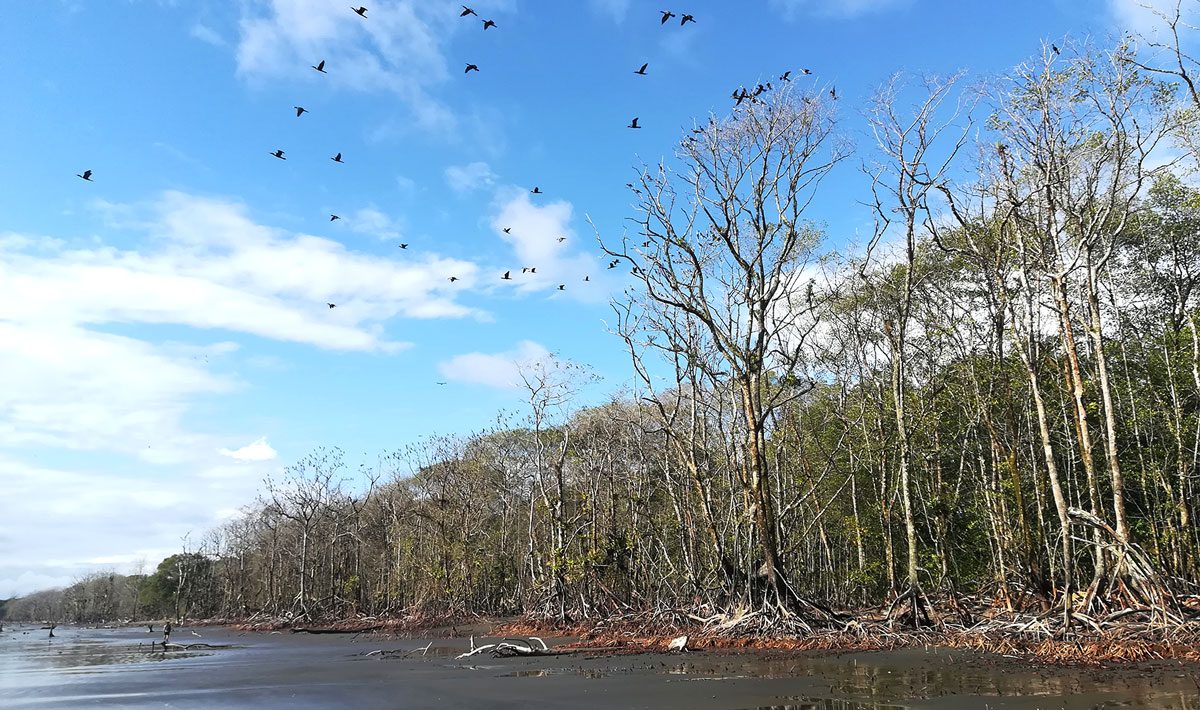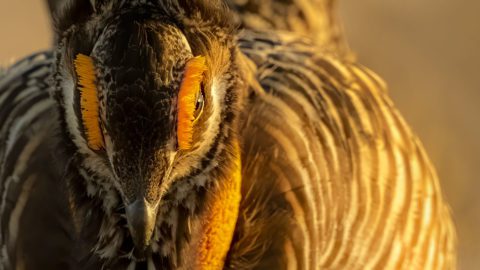In Colombia, a Plan to Reforest Mangroves, Feed Hungry Shorebirds, and Create Coastal Buffers
By Gustave Axelson
March 30, 2020From the Spring 2020 issue of Living Bird magazine. Subscribe now.
Sea-level rise is a climate-change problem almost everywhere ocean meets land, including the Pacific Coast of Colombia—where the coastline has eroded inland by 600 yards over the last 30 years. But civil engineer Johann Delgado has a plan to use mangrove forests to adapt to the rising waters, and in the process restore crucial shorebird habitat.
Delgado’s work is part of the Cornell Lab of Ornithology’s Coastal Solutions Fellows program, a cross-disciplinary initiative to bring together scientists, developers, and planners to address issues of diminishing coastal habitat throughout the Americas. For this project, Delgado is developing models of coastal ocean currents to predict changes that are coming to Punta Soldado, an island that’s home to a fishing village in the Bay of Buenaventura.
Already, Punta Soldado is suffering the effects of rising ocean waters. The fishing village has been in a constant struggle to keep up with a changing coastline and waves that reach farther and farther inland, washing out homes, roads, and docks for fishing boats. Sandbars and mudflats have been washed out by rising seas as well, eroding habitat used by more than 8,000 shorebirds—including the Western and Spotted Sandpipers and Semipalmated and Wilson’s Plovers that migrate through the region every year.
Delgado’s plan is to restore the mangrove forests that used to form a protective barrier along the coastlines of Punta Soldado and shelter the fishing village. By applying engineering models to erosion and sedimentation rates, the plan guides local decision-making on the placement of wooden barriers in key areas to capture sediment when it washes inland, cut off erosion, and gradually raise the elevation of sandbars.
“There are coastal defense projects with the same goals as this one all over Latin America, but those projects aren’t always driven by science and engineering, which can limit their effectiveness,” says Osvel Hinojosa-Huerta, director of the Coastal Solutions Fellows program. “It’s so cool to have an engineer designing and driving this project.”
The now-elevated sandbars will then be reforested with mangrove trees, which will buffer higher waves and incoming tides. Over time, more soil will be locked in as the foundation for new mudflats to host the thousands of hungry migratory shorebirds.
“We are considering changes in physical, ecological, and socioeconomic aspects of the island to build a tool for enhancing climate adaptation and habitat conservation,” says Delgado.
In late 2020 Delgado and his team from the National University of Colombia will present their recommendations in a report to the regional environmental authority (Corporación Autónoma Regional del Valle del Cauca) and the community of Punta Soldado.
“Authorities are eager to learn how to take the plunge from climate and conservation agreements to local transformations,” says Delgado.
Delgado is one of the Cornell Lab’s 12 Coastal Solutions fellows working on coastal-resilience projects in Mexico, Guatemala, Colombia, and Chile.
“The overall goal of the Coastal Solutions Fellows program is the cultivation of a network of leaders for innovative coastal resiliency,” says Hinojosa-Huerta, the program’s director. “By rethinking landscape design, planning, governance, and engineering interventions, we can achieve effective conservation along the Pacific Coast of Latin America.”

All About Birds
is a free resource
Available for everyone,
funded by donors like you
American Kestrel by Blair Dudeck / Macaulay Library




